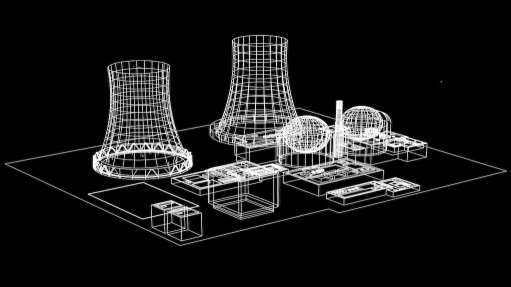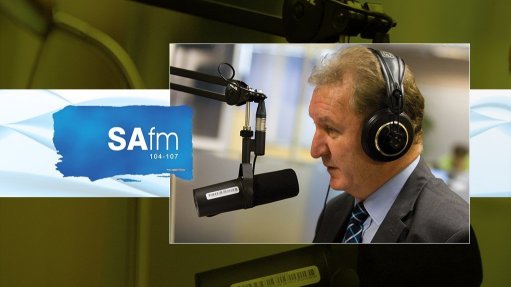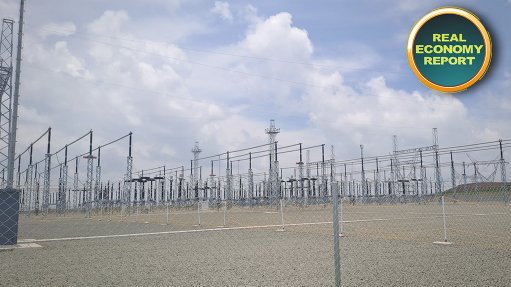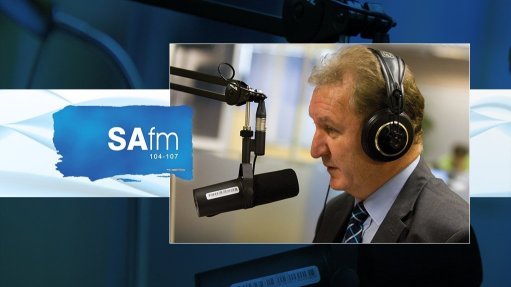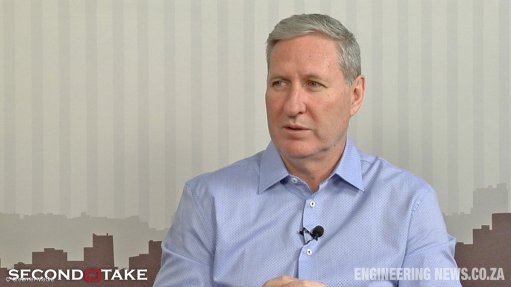Solar PV installations expected to recover strongly this year after marked decline
The South African Photovoltaic Industry Association (SAPVIA) is expecting the domestic market to recover this year to the record installation levels achieved two years ago, following a marked slowdown last year.
CEO Dr Rethabile Melamu tells Engineering News that installations fell by more than 50% to about 1 GW in 2024/25, covering the period from April 1 to March 31, from 2.4 GW in 2023/24.
The drop was most pronounced in the residential sector, which shrunk by more than 60% during the period, following substantial growth during South Africa’s most intensive loadshedding years.
Residential, commercial and industrial (C&I) and private utility-scale installations have climbed to about 6 GW, with most of that capacity having been installed over the past five years when South Africa’s power cuts became an almost daily or twice-daily occurrence.
That surge has contributed materially to the rise in the country’s overall installed base to about 9 GW; a figure that stood at close to zero when SAPVIA was formed 15 years ago by its founding six members in anticipation of the first public procurement of renewables projects. Melamu reports that the organisation’s membership currently stands at 701, having peaked at 783 in April 2024.
LARGE PROJECT UNDERPIN
SAPVIA, which monitors market activity using information collected from its members, alongside information provided by the regulator and academia, anticipates that installations could match the 2023/24 peak this financial year.
This recovery, Melamu reports, will be supported primarily by large C&I projects, both distributed and wheeling projects, as well as utility projects procured under government’s Renewable Energy Independent Power Producer Procurement Programme.
However, there are also signs of a recovery in the residential market, spurred by rising Eskom and municipal tariffs, and the fall in prices for PV modules, batteries, and inverters. As an indication, 550 W PV modules are currently being sold for about R2 000 a unit, whereas their price was closer to R4 000 three years ago.
SAPVIA’s bullish outlook is premised partly on an analysis of PV project registrations with the National Energy Regulator of South Africa, which reached nearly 15 GW by the end of June, with t 67% of these registered projects being solar PV based.
Melamu acknowledges the difficulties in tracking how many of these projects have advanced to construction and/or financial close, but says the accuracy of its market intelligence is being continually updated and enhanced by direct input from members, as well as through tracking by the University of Cape Town Business School, which is also monitoring developments in the pipeline.
The anticipated recovery is in line with SAPVIA’s view that the South African PV market can sustainably add between 1.5 GW and 2 GW yearly across the three main market segments of residential, small C&I installations of below 30 kW, and large C&I and utility-scale installations.
The anticipated growth in the large C&I segment is being driven partly by the fact that these projects, which were conceived at the height of loadshedding, had matured to the point of a final investment decision. Most of these projects continue to be supported economically by the rise in tariffs and the fall in prices, and strategically because of moves by firms to decarbonise their production in response to consumer pressure or in anticipation of carbon border adjustment mechanisms in key export markets.
MARKET UNCERTAINTY
These tailwinds are expected to persist, but Melamu says there are also several uncertainties that could affect the outlook beyond 2025/26, including:
The possibility of lower-than-anticipated allocations to solar PV in the updated Integrated Resource Plan (IRP) post-2028, which is expected to be approved by Cabinet in the coming months;
Changes to the tariff structure that could unfairly discriminate against both small rooftop PV and electricity wheeled from utility plants;
Onerous and costly registration requirements for legacy residential systems, which SAPVIA believes could be mitigated through the introduction of a tiered system that allows electricians rather than registered engineers to sign-off on small-scale installations; and
The potential introduction, following a review by the International Trade Administration Commission of South Africa (Itac), of “umbrella” import tariffs across all renewables components, regardless of capability and capacity for local production.
Melamu believes all these uncertainties can be overcome through genuine consultation with the industry and other stakeholders, but is nevertheless concerned in light of the limited timeframe given to consultations on the IRP update and the lack of consultation ahead of the Gazetting of the Itac tariff review.
She is convinced that, with industry buy-in and targeted industrial policy, significant industrialisation and localisation is possible, particularly of components such as mounting structures and trackers, cables, inverters and electrical balance of plant systems.
“Entry into panel production is extremely challenging, however, due to China’s State-supported dominance of the panel value-chain.”
SCRATCHING THE SURFACE
Likewise, Melamu believes there is significant untapped potential to deploy solar PV into the medium to low-income household segment to support electrification and help address the scourges of theft and nonpayment.
“There is currently a wrong perception that solar is a solution for the rich, which is quite ironic given that it was not so long ago when it was viewed as a solution primarily for rural communities.
“We believe that, with the right incentives and the right models for financing, we can deploy more systems in low-income households in a way that makes these households energy secure and also helps address some of the theft and non-payment problems.
“With penetration of solar below 3% for residential households, we have barely scratched the surface,” she concludes.
Article Enquiry
Email Article
Save Article
Feedback
To advertise email advertising@creamermedia.co.za or click here
Comments
Announcements
What's On
Subscribe to improve your user experience...
Option 1 (equivalent of R125 a month):
Receive a weekly copy of Creamer Media's Engineering News & Mining Weekly magazine
(print copy for those in South Africa and e-magazine for those outside of South Africa)
Receive daily email newsletters
Access to full search results
Access archive of magazine back copies
Access to Projects in Progress
Access to ONE Research Report of your choice in PDF format
Option 2 (equivalent of R375 a month):
All benefits from Option 1
PLUS
Access to Creamer Media's Research Channel Africa for ALL Research Reports, in PDF format, on various industrial and mining sectors
including Electricity; Water; Energy Transition; Hydrogen; Roads, Rail and Ports; Coal; Gold; Platinum; Battery Metals; etc.
Already a subscriber?
Forgotten your password?
Receive weekly copy of Creamer Media's Engineering News & Mining Weekly magazine (print copy for those in South Africa and e-magazine for those outside of South Africa)
➕
Recieve daily email newsletters
➕
Access to full search results
➕
Access archive of magazine back copies
➕
Access to Projects in Progress
➕
Access to ONE Research Report of your choice in PDF format
RESEARCH CHANNEL AFRICA
R4500 (equivalent of R375 a month)
SUBSCRIBEAll benefits from Option 1
➕
Access to Creamer Media's Research Channel Africa for ALL Research Reports on various industrial and mining sectors, in PDF format, including on:
Electricity
➕
Water
➕
Energy Transition
➕
Hydrogen
➕
Roads, Rail and Ports
➕
Coal
➕
Gold
➕
Platinum
➕
Battery Metals
➕
etc.
Receive all benefits from Option 1 or Option 2 delivered to numerous people at your company
➕
Multiple User names and Passwords for simultaneous log-ins
➕
Intranet integration access to all in your organisation









